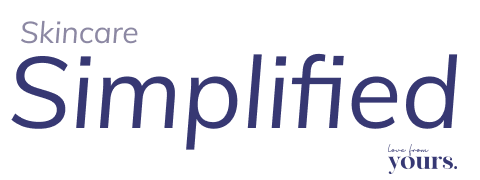We’re all guilty of not paying closer attention to the ingredients that go into our skincare and makeup. Let’s be honest, ingredient labels often sound a lot like gibberish (why are scientific terms so difficult to pronounce!?). Plus they’re often in tiny, unreadable print – who’s really going to take time to read and understand what it all means?
The truth is, you’ll be surprised by how many mainstream cosmetic products contain harmful ingredients today, and you could be unknowingly applying toxic ingredients to your skin. Your skin absorbs as much as 60% of what you apply to it, and some toxic ingredients have been linked to serious health complications like cancers, tumours, hormonal imbalance, irritability, allergic reactions, and reproductive problems.
We hate to say it, but ignorance isn’t bliss. It’s just always best to stay as informed as possible about the ingredients in your products and make sure you stay away from some of the most common harmful ingredients. To make things super easy, we’ve compiled a list of the top 8 ingredients you should always watch out for in any beauty product before purchasing!
1. Parabens
Pronounced: /pa·ruh·benz/
Parabens are preservatives that keep products from growing bacteria. This might sound like they are important (who wants bacteria growing in their skincare?) but they actually do more harm than good. They mimic estrogen in your body, which leads to a host of problems like hormonal imbalance, breast tumours, and reproductive disorders.
Watch out for: words with the suffix paraben, for example, Isobutylparabens, Methylparaben, and Propylparaben.
2. Ethanolamine
Pronounced: /eth·uh·nol·uh·meen/
Ethanolamine is clear and colourless that helps water-soluble and oil-soluble ingredients blend together (oil and water don’t mix, so you need something that helps them bind together!). You’ll find it in facial cleansers, shampoos, soaps, and household detergent, but studies have shown that it is carcinogenic (leading to cancer) and has been proven to reduce brain development.
Watch out for: The abbreviations DEA (diaethanolamine), MEA (monoethanolamine) and TEA (triethanolamine).
3. Phthalates
Pronounced: /f·tal·ates/
Phthalates are widely used in cosmetic to soften, preserve and improve texture. You’ll find them in your skincare, haircare and products infused with synthetic fragrances. They are known carcinogens (leading to cancer) and can disrupt hormonal balance and cause reproductive problems.
Watch Out for: abbreviations including DBP, DEHP, DEP, DMP.
4. BHTs (Butylated Hydroxytoluene)
Pronounced: /biu·til·ate·ed – hyd·rox·i·tol·yu·lean/
BHTs are used to extend shelf life but it poses a great risk to your hormonal balance and liver function. It has been banned from foods in a number of countries like Japan, Australia, Canada, New Zealand, and all throughout Europe. However, there are still cosmetics companies using it worldwide.
Watch out for: BHT, Butylated Hydroxytoluene
5. Siloxanes A.K.A Silicones
Pronounced: /sil·ox·hanes/ /si·luh·kownz/
This is widely used in cosmetics to boost the performance, texture and appearance of a product, helping soften, smooth, and moisturise. In haircare, for example, it is known to reduce frizz and increase shine. However, studies have found that siloxanes can disrupt your nervous system and hormone production. Additionally, Siloxanes do not break down or dissolve properly when washed off. This turns wastewater toxic, which poses a huge risk to fish, wildlife and the environment.
Watch out for: Ingredients ending in –iloxane and –methicone, -icone (dimethicone)
6. Formaldehyde
Pronounced: /for·mal·duh·haid/
Widely used as a preservative in cosmetics, formaldehyde is a colourless, flammable gas. It helps prevent or inhibit microorganisms that can grow in personal care products and is a known carcinogen which can exacerbate asthma, joint pains, dermatitis, and even result in nausea.
Watch out for: Formalin (formaldehyde in a water solution), DMDM Hydantoin, Quaternium-15, and Methenamine.
7. PEGs (PolyEthylene Glycols)
Pronounced: /pol·i·ethel·een – glai·cols/
PEGs are used as thickeners, solvents, and softeners (mostly to improve the texture of your products. They are petroleum-base and commonly found in lotions, scrubs, toothpaste, and sunscreen. But they are highly toxic: they’re carcinogenic and can hamper your skin’s natural ability to produce moisture, causing dryness and irritation.
Watch Out for: PEG, Polyethylene Oxide, any variation with the word glycol
8. Triclosan (TSC)
Pronounced: /try·clo·san/
An antimicrobial and antifungal agent, Triclosan was initially developed as a surgical scrub for medical professionals. Today it’s used as a preservative in soaps, detergents, cleansers, and toothpaste. It has been linked to hormonal disruption, weakening your immune system, and it has been known to have adverse effects on the environment.
Watch out for: Triclocarban (TCC)
We get it. Your time is precious and it’s extremely overwhelming to research every ingredient that goes into your skincare. While this list barely scratches the surface, these are the top 8 ingredients to avoid at all costs! Start by getting to know these names like the back of your hand, and you’ll be on your way to toxin-free skincare in no time.
If you’re still wary about how to look out for harmful ingredients, consider going for skincare that is created with your well-being and best interest at mind. At Yours, we do all the hard work for you. We only use toxin-free ingredients that are tested to the highest standards of safety and efficacy, and which are sustainably-sourced from the Swiss Alp!






